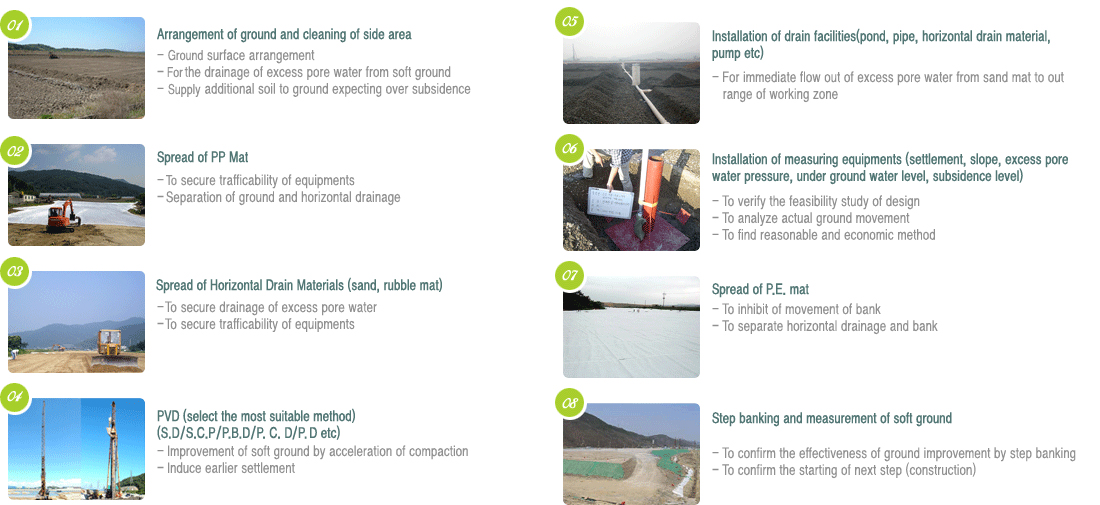
| Soil | Thickness of Soft ground | N Value | qc(kg/cm2) | qu(kg/cm2) |
|---|---|---|---|---|
| Clay / Manure | Less than 10m | Under 4 | Under 8 | Under 0.6 |
| Over 10m | Under 6 | Under 12 | Under 1.0 | |
| sandy | - | Under 10 |
※Above table shows only general standard. For exact assessment,
1) Character of strength of underground
2) banking height
3) banking condition
4) Thickness and consolidation of clay layer
5) importance of structure on it should be considered.
(qc : Single mandrel compressed strength of soft ground layerqu : Cone index of soft ground layer)

- Due to low shearing stress, the stability problem can be easily occurred

- Water containing rate of alluvial soil will be around 100% when loaded. The ground start subsidence by decrease of volume of water in ground
- The base pile can be broken by friction when the subsidence of soft ground become deeper than pile top.
- The saturated sandy, silty ground has unsuitable structure. Its volume and strength will be suddenly decreased by force of earthquakes, strong waves and vibration. By the impacts of those factors, the excess pore pressure will be increased. Then the bearing capacity shall be around 0 and becomes liquid like muddy water.
- The loose sandy ground can cause the 1) liquid phase 2) demolish of dam by boiling & piping phenomenon which happened by Quick Sand phenomenon.
| Method | Details | Effectiveness |
|---|---|---|
| Surface Treatment | PP Mat, Mixed surface treatment, surface drainage, sand mat | |
| Transformation | Excavation, Compulsory exchange, Blast exchange | |
| Banking Pressure | Banking Pressure, Easy slope | |
| Banking reinforcement | Banking reinforcement | |
| Load Reducing | Light banking | |
| Slow loading | Steady loading, Step loading | |
| Re-Loading | Bank loading, Air pressure loading, Ballasting under ground water | |
| Vertical Drainage | S.D / PBD / PCD / P.D | |
| Sand Pile | Sand Compaction Pile | |
| Compaction | Vibro-Compaction, Lot tamping, Dynamic Compaction | |
| Concreting | Mixed treatment in deep area, Gypsum pile, Concrete injection, Freezing | |
| Structure | Pile, Board pile, Culvert (concrete structure) |


